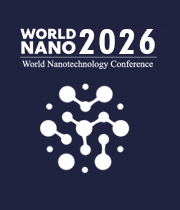Title : Enhanced field emission in neodymium sulfide–decorated vertically aligned multiwall carbon nanotube (MWCNT@NdS) through interfacial coupling heterostructures
Abstract:
Field emission (FE) materials with low turn-on fields, high current densities, and long-term stability are essential for advancing vacuum microelectronics, high-resolution displays, and X- ray sources. Carbon nanotubes (CNTs) are widely studied due to their high aspect ratio and conductivity, but pristine CNT emitters suffer from relatively high work functions and emission instability. In this study, we present a hybrid field emitter based on multi-walled carbon nanotubes (MWCNTs) combined with neodymium sulfide (NdS) nanoparticles. This combination couples CNTs’ strong field enhancement with NdS’s low work function.
The MWCNT–NdS heterostructure was fabricated through a simple three-step process: (i) growth of MWCNT rods via chemical vapor deposition, (ii) preparation of NdS nanoparticles through a micellar-assisted solid-state route, and (iii) assembly of the heterostructure, where NdS nanoparticles were evenly anchored on the MWCNT rods using ethylene glycol and ethanol as binding agents through spin-coating.
The MWCNT–NdS composite exhibits a significantly lower turn-on field of 2.0 V/μm at 10μA/cm², a moderate work function of 3.1 eV, and a maximum current density of 12.2 mA/cm², surpassing pristine MWCNTs (2.2 V/μm; 7.76 mA/cm²) and NdS (4.9 V/μm; 0.21 mA/cm²). The device demonstrated excellent emission stability, with current fluctuations remaining within ±4% of the average at a preset field of 7 mA/cm² over 8 hours. The outstanding FE performance arises from a high field enhancement factor (β ≈ 2.9 × 10³), attributed to strong interfacial coupling and synergistic charge transfer between MWCNTs and NdS nanoparticles.
This study highlights the potential of interfacially engineered 1D–2D hybrid heterostructures for next-generation FE cathodes, combining scalability, robustness, and superior electron emission characteristics.



